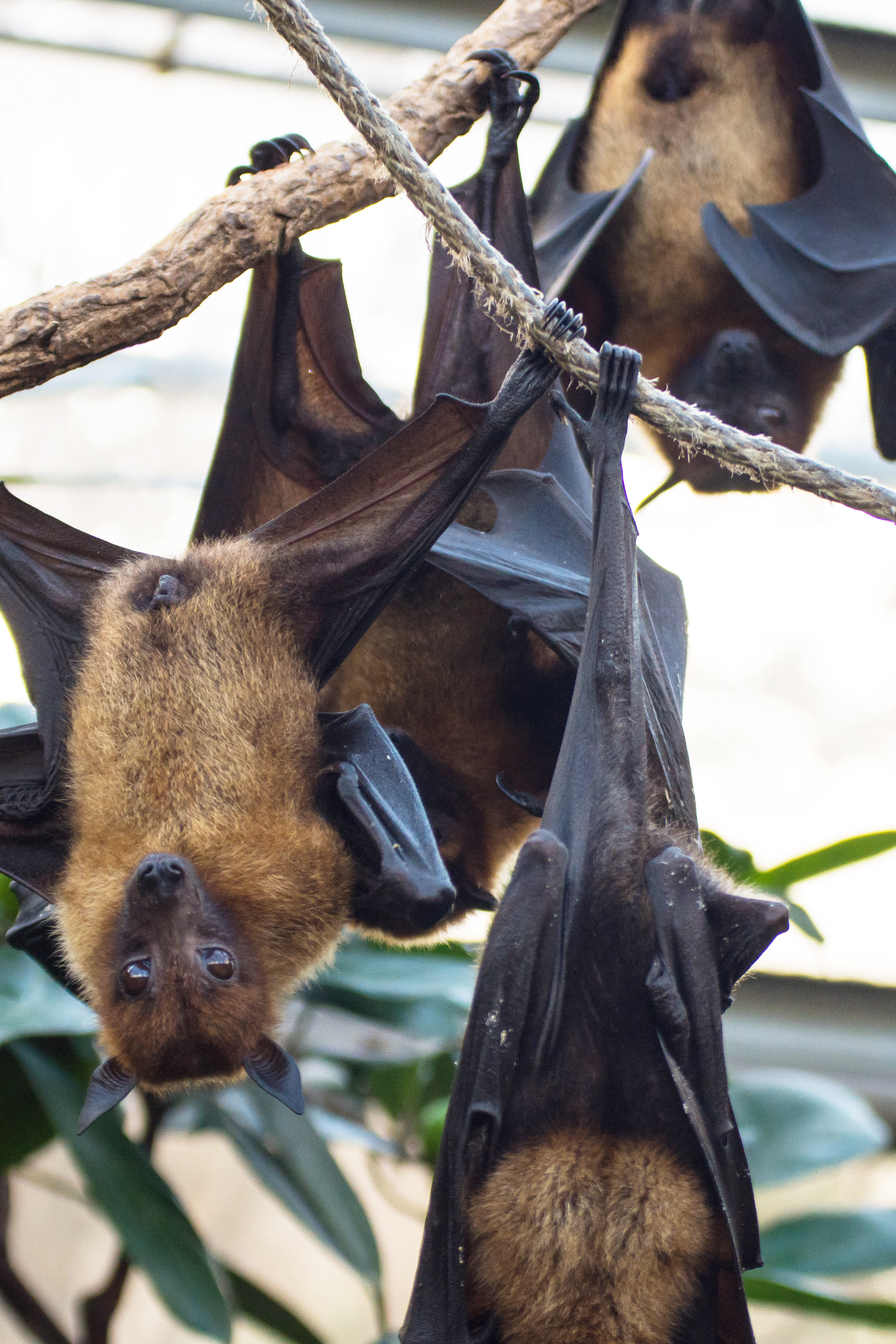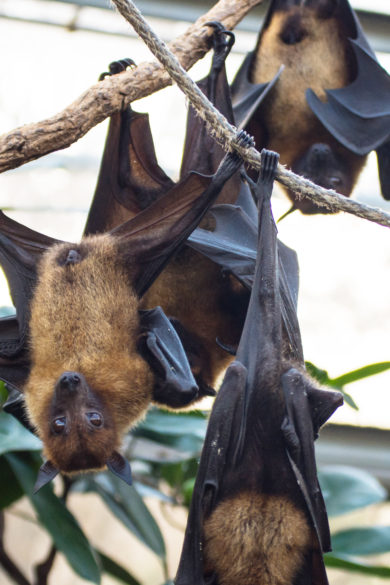Pterosaurs (Greek pteron and sauros, meaning “wing lizard”) are constructed from a combination of the characteristics of mammals, birds and dinosaurs with one of the weirdest looking beaks possible added on. This example points to the problem of taxonomy, the science of classifying life. Pterosaurs fly like birds and can flap their “wings” like a bird. They also can soar like an eagle using bat-like wings made from a flap of skin stretched between their body and a long fourth finger called the wing finger. They also have many body traits like dinosaurs. For this reason, they are often referred to as flying dinosaurs, or dragons of the air (Unwin, 2006, p. 2). Ironically, they are classified as reptiles likely because birds supposedly evolved after them.
Pterosaurs were first discovered in 1784 in the German Solnhofen limestone quarries. This is the same location where another strange creature, Archaeopteryx, originally identified as a pterosaur, was found (Clarey, 2015, p. 66). Twenty-nine pterosaur species, over 26% of the 110 pterosaur species currently known (in about 85 genera), have been found in Solnhofen limestone quarries alone.
Pterosaurs are the largest known flying animals that have ever lived. Most of them were about the size of a large bird, but some had wingspans up to 15 meters (over 45 feet) long and heads as large as a small automobile. They were excellent flyers, and from a distance looked like large birds. Even though pterosaurs had a long alligator like snout, they were in some ways more similar to birds than to alligators or any other reptile. For example, like birds, their bones were air-filled and hollow, some with walls as thin as playing cards. Thus, their fossils do not lend themselves to preservation; nevertheless, they have been found all over the world. Enough fossils have been preserved to determine that there were as many as 110 different species. They even had a keeled breastbone, required for the attachment of flight muscles, and an enlarged brain that indicates they had the specialized features required for flight. Like mammals, their bodies and parts of their wings sported dense coats of fine hair filaments called pycnofibers (Yang, et al., p. 24). The pycnofiber filaments were very much like mammal hair, yet homologous to the bird down feathers used to stuff pillows. [Homologus means that the picnofibres are presumed to share a common origin with feathers.] Their hair was so unique that it is believed to have evolved independently on pterosaurs and no other animal. The hair likely functioned to improve the aerodynamic qualities of their body, and also facilitated tactile sensing, signaling, and even thermoregulation.
Unlike feathered birds, pterosaur “wings” were constructed from leathery membranes similar to the wings of bats, which are the only flying mammals! New fossil pterosaurs discovered in Germany in 2001 were so well-preserved that even the wing structure details were visible. We now know that their wing membranes were very complex structures designed for effective flight. Also, like all reptiles, all “early pterosaurs had teeth” (Veldmeijer, et al., 2012. pp. 55-56).
Since the first study of pterosaurs in 1784, a great deal of research has been completed in the last century. Yet much about these creatures is still unknown (Hone, 2013, p. 1366). For example, were they warm or cold blooded? What was the function of the long colorful crests on the top of their heads? Possibilities include a result of sexual selection, a means of staying cool, or a steering aid. The fact that their crests vary greatly according to species indicates they have a display function to help them identify other members of their species.
Pterosaur Evolution
Because they are different in several major ways from both birds and lizards, a major problem is pterosaur evolution (Witton, 2013). It is even difficult to speculate where they evolved from, or to identify their possible transitional forms. Professor Veldmeijer, et al., writes that where they evolved “is not conducive to fossilization, which means our quest for these pterosaur ancestors may be in vain.” (Veldmeijer, et al., 2012, p. 55). The fact that an estimated 110 species of pterosaurs have been discovered argues that they could not have evolved in locations “not conducive to fossilization.” This claim is made to excuse the fact that the fossil record does not provide even a hint of their evolution.
Since no plausible common ancestor exists, Darwinists postulate that most of their traits “were not inherited from a common ancestor, but result from convergent evolution!” (Unwin, 2006, p. 7). This means their many major unique traits evolved separately from close to scratch! If so, their presumed long evolution from, for example, no wings to their large functional wings, should be well-documented in the fossil record. Irreducible complexity is also a major problem in pterosaur evolution. As noted by Peters, “Successful powered flight would have been possible only after a critical wing size had been achieved” (Peters, 2001, p. 277).
Of the comparatively good pterosaur fossil record “evidence of pterosaur [evolution]… seems to be completely and utterly absent: Not a single thin-walled bone, or shard of a wing-finger bone, has yet been found,” says David Unwin, the world’s leading expert on pterosaur evolution (2006, pp. 233-234). As a confirmed evolutionist, Professor Unwin believes they must have evolved, so asks “when did these currently invisible [evolutionary] changes occur?” His answer is that perhaps the “Pterosaur experienced an evolutionary ‘big bang,’” meaning the evolution of a wing from a limb happened so rapidly that the thousands of changes required to change a leg into a functional wing were not, or were very rarely, recorded in the fossil record (Unwin, 2006, p. 233). The fact is, no evidence of their evolution exists in the fossil record, and the most straight forward logical answer is that the first pterosaur was a fully-formed pterosaur.
Researchers early on questioned if their strange design allowed them to actually fly. Consequently, they constructed several scale models to test this ability. They concluded that these huge animals not only could fly, but they were expert flyers in spite of the enormous size of the larger species. Evolutionists claim they were the first known animal to fly. And, as this research showed, they were perfectly designed for highly effective flight. Yet we have no examples of preflight animals that perfected flight leading up to the flying pterosaurs.
All known possible evolutionary precursors to pterosaurs were well-designed for either terrestrial life or flight, and no clear intermediate creatures existed between the precursors to flight and the flyers. Almost the entire design of a terrestrial animal would have to be modified to enable it to convert from a terrestrial to a flying animal (Lü, et al. 2010,). The best guess where they evolved from back in deep time, which is highly debated, is that their early ancestor was a Scleromochlus, an animal with the body of a lizard with long, thin legs like a whooping crane that look nothing like a pterosaur. Some transitions of minor traits though, have been uncovered. For example, Darwinopterus has been posited as a transition bridging the former gap between a long-tailed basal form and a short-tailed form derived from members of Pterodactyloidea (Unwin, 2010, pp. 68-69). As imagination is unconstrained by the fossil record, speculation is rampant. For example, Peters concluded contrary to traditional thinking, the wings of pterosaurs appeared last, not first among their adaptations. The wings of pterosaurs appear to have been secondarily adapted for flight after first appearing as foldable membranes, employed in display, bluff, or vertical running escapes (Peters, 2001, p. 299).
Why They Became Extinct
The reason they became extinct is also debated, as well as even if they have become extinct. Occasionally, sightings are claimed by persons such as ornithologists or airline pilots that are somewhat convincing. Most claimed sightings, though, have not been carefully documented, ideally with a Pterosaur body as proof. It is also hard to verify the identity of creatures sighted from a distance since they look very much like a large bird. Judgements of their size are also difficult because, when in the sky, there is rarely something of known size to compare it with to estimate size (Hone, 2013). Another problem is that many pterosaurs were the size of a robin, others the size of a small plane.
Intriguing rock carvings suggest these flying monsters could have survived well into modern times. Since no clear proof exists that they are extinct, the assumption is that some, possibly smaller pterosaur species, may have survived. What is clear, however, is that there is no sign of any evolutionary ancestors. This wonderful design appeared fully functional in the fossil record.
References
Clarey, Tim. 2015. Dinosaurs: Marvels of God’s Design. Green Forest, AR: Master Books.
Hone, D.W.E. 2013. Pterosaur Research: Recent Advances and a Future Revolution. Acta Geologica Sinica 86(6):1366-1376.
Lü Junchang, Unwin, D. M., Ji Shu-an & Ji Qiang (Eds). Flugsaurier 2010, Third International Symposium on Pterosaurs: 5-10 August, 2010, Beijing, China. Acta Geoscientica Sinica, 31 (Supp. 1) 1-93.
Peters, David. 2001. A new model for the evolution of the pterosaur wing—with a twist. Historical Biology 15:277–301.
Unwin, David. 2006. Pterosaurs From Deep Time. New York, NY: Person Education.
Unwin, David, and Jay Lü., 2010. Darwinopterus and its implications for pterosaur phylogeny. Acta Geoscientica Sinica, 31(1):68–69.
Veldmeijer, Andre J.; Mark Witton, and Ilja Nieuwland. 2012. Pterosaurs: Flying Contemporaries of the Dinosaurs. Barnsley, England, UK: Sidestone Press.
Witton, Mark P. 2013. Pterosaurs: Natural History, Evolution, Anatomy. Princeton, NJ: Princeton University Press.
Yang, Zixiao, et al,. 2019. Pterosaur integumentary structures with complex feather-like branching. Nature Ecology & Evolution 3:24-30.
Paleoworld. Flying Dinos. The Learning Channel. 1997. Film 2 is on Pterosaurs.
Jerry Bergman
December 2020
Subscribe to Dialogue








